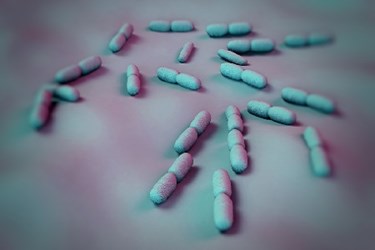5 Steps To Listeria Detection
By Laurel Maloy, contributing writer, Food Online

Sample6 and a family-run business are illustrating how simple it is to prevent costly recalls while improving production time
Times, they are a-changing. Headlines like this one: Dietz & Watson Speeds Food Safety Testing With Sample6 are definitely a more-welcomed sight to food makers than contamination news. This headline is the subject of a press release from Dietz & Watson, a family-run business established 75 years ago and now in its fourth generation. Ruth Dietz, the family’s second generation and 89 years of age, is still coming to the office every day. The company uses no preservatives in its products and was the innovator for applying pathogen-killing foam to the floor of the processing facility to prevent contamination. Every bit of the 2.5 million pounds of deli meats produced weekly is still hand-inspected and its hams are hand-tied. Always believing in “quality above all else,” this latest announcement is not so much a surprise as it is further proof of Dietz & Watson’s commitment to being exceptional.
White Paper: Contamination Detection In The Dairy Industry
Touting its mission to “deliver the safest, most delicious premium deli meats and artisan cheeses on the market,” Dietz & Watson announces it newest innovation — using Sample6 technology to test for Listeria before any products leave the plant.
The director for quality control at Dietz & Watson, Bob Seaver, talks about the ability to do in-plant testing and, as a result, to proactively ensure consumer safety. Recalls will be prevented as only fully-tested products leave the warehouse bound for customer tables. Doing away with the complexity and time-constraints of previous testing methods, Sample6’s DETECT/L provides in-plant Listeria detection within the time frame of a single shift. Enrichment-free, the process requires 5 simple steps and is pretty much foolproof. The system works by:
- Collecting samples by swabbing surfaces with a special sponge provided for that purpose
- Adding the Sample6 processing solution to the sponge in a container
- Incubation at 30°C (86°F)
- Placing the sample in a centrifuge to clear any large debris
- Placing the tube in the Bio-Illumination Platform reader for results in seconds
The process is sensitive enough to detect a single Listeria cell and is remarkably easy to use. Carla Mulhern, a Dietz & Watson microbiologist, comments on how easy Sample6 makes her job and how only a few days of training equipped her entire staff to accurately test. She also says that none of her team “misses the complexity of the previous testing methods.” The quick and accurate results do not impinge on the production schedule. In fact, gone are the days of holding products until test results come back from a third-party lab. It can be produced, tested, and shipped all within a single day.
Contaminant Removal Guarantees Pure Food
DETECT/L is just one of the enrichment-free, on-site, in-shift pathogen diagnostics offered by Sample6. In keeping with FSMA and HACCP initiatives, Sample6 is focusing on prevention, rather than on reaction to pathogenic contamination. Dietz & Watson, due to the successful deployment of Sample6 at its Philadelphia plant, plans to incorporate it in its other two plants, in Baltimore, MD and Corfu, NY.
If you get the opportunity, click on the movie projector on the Dietz & Watson page Celebrating 75 years. This is a prime example of a company’s commitment to the consumer, communication, and personal transparency.
